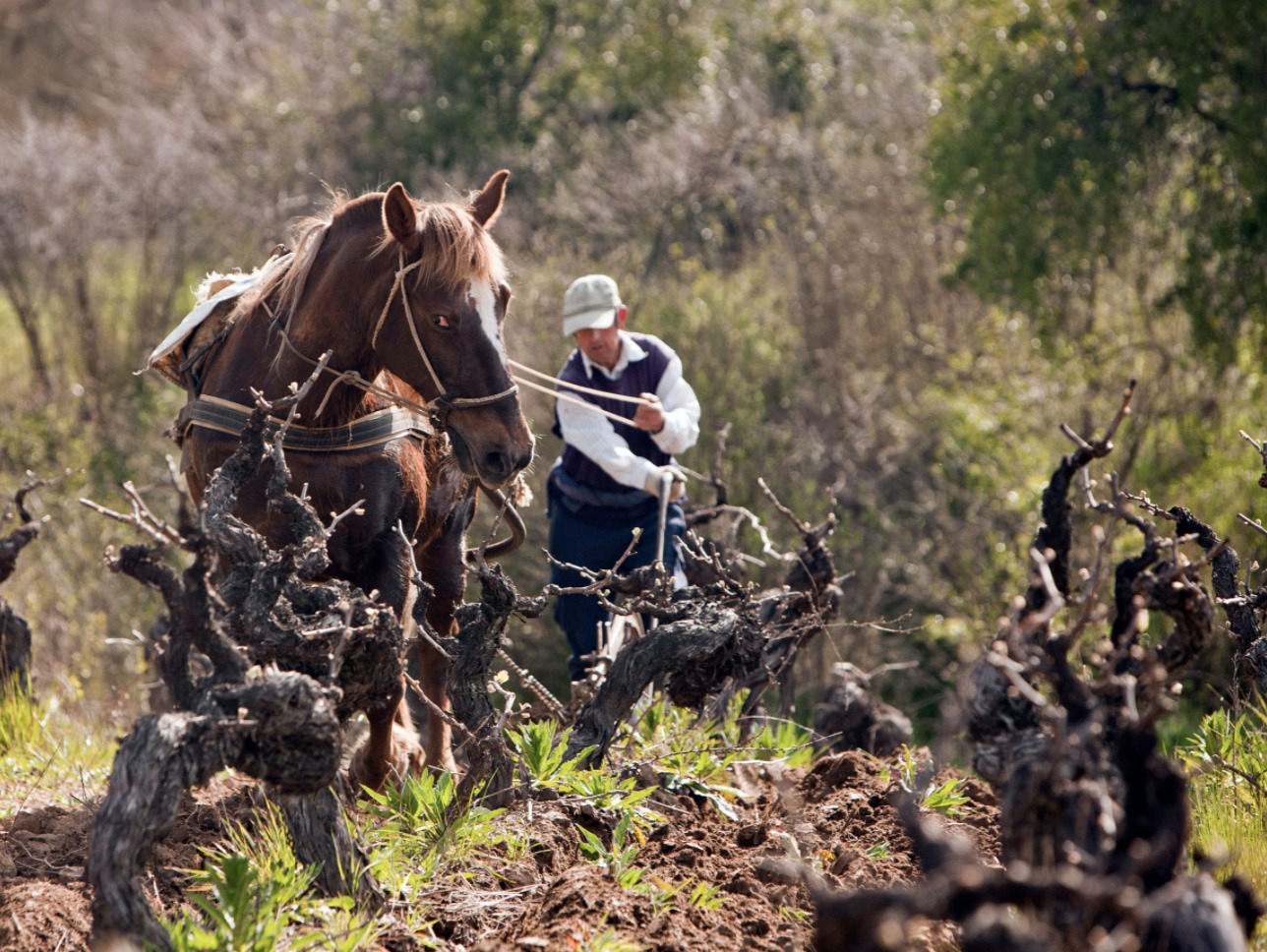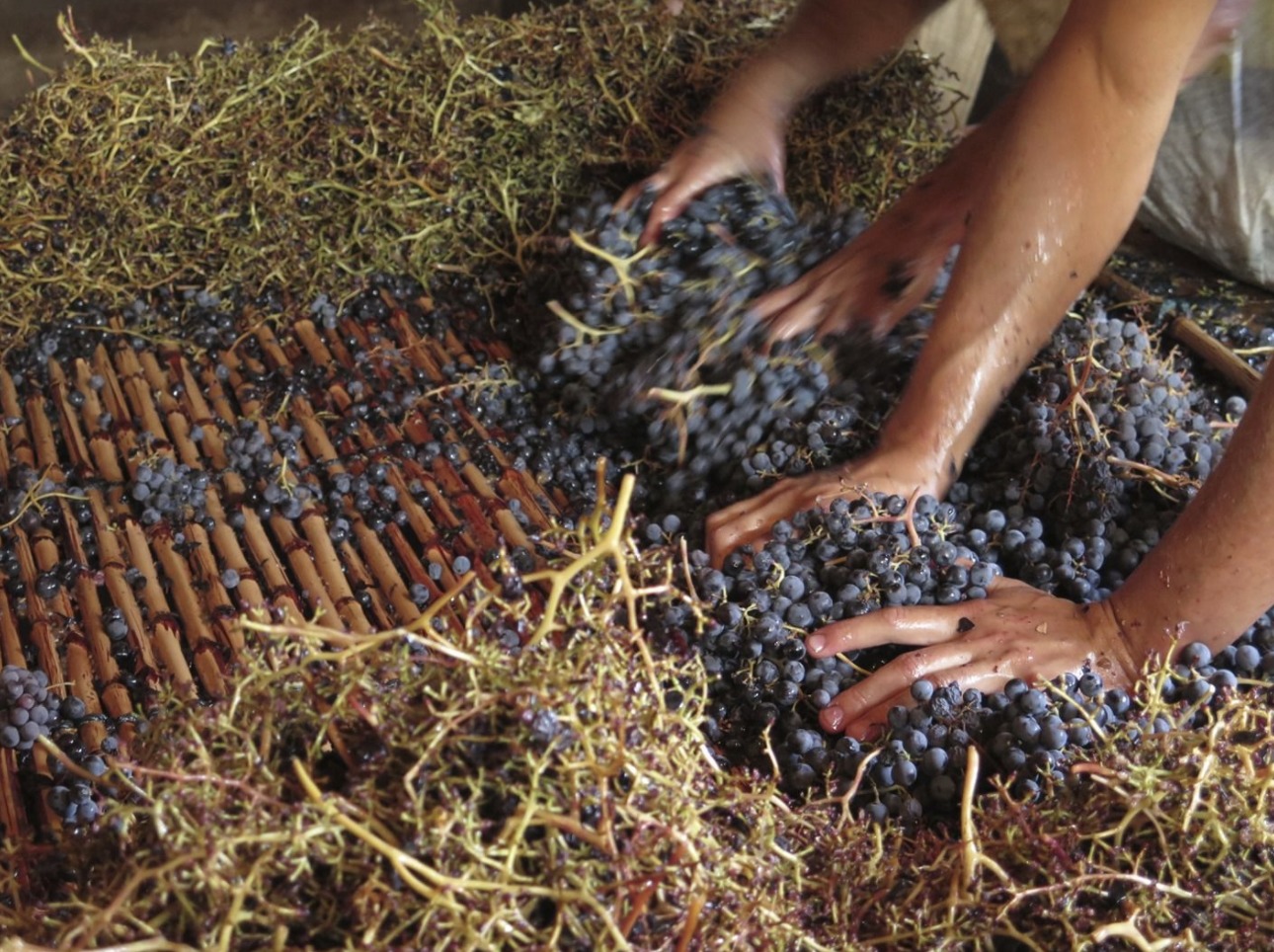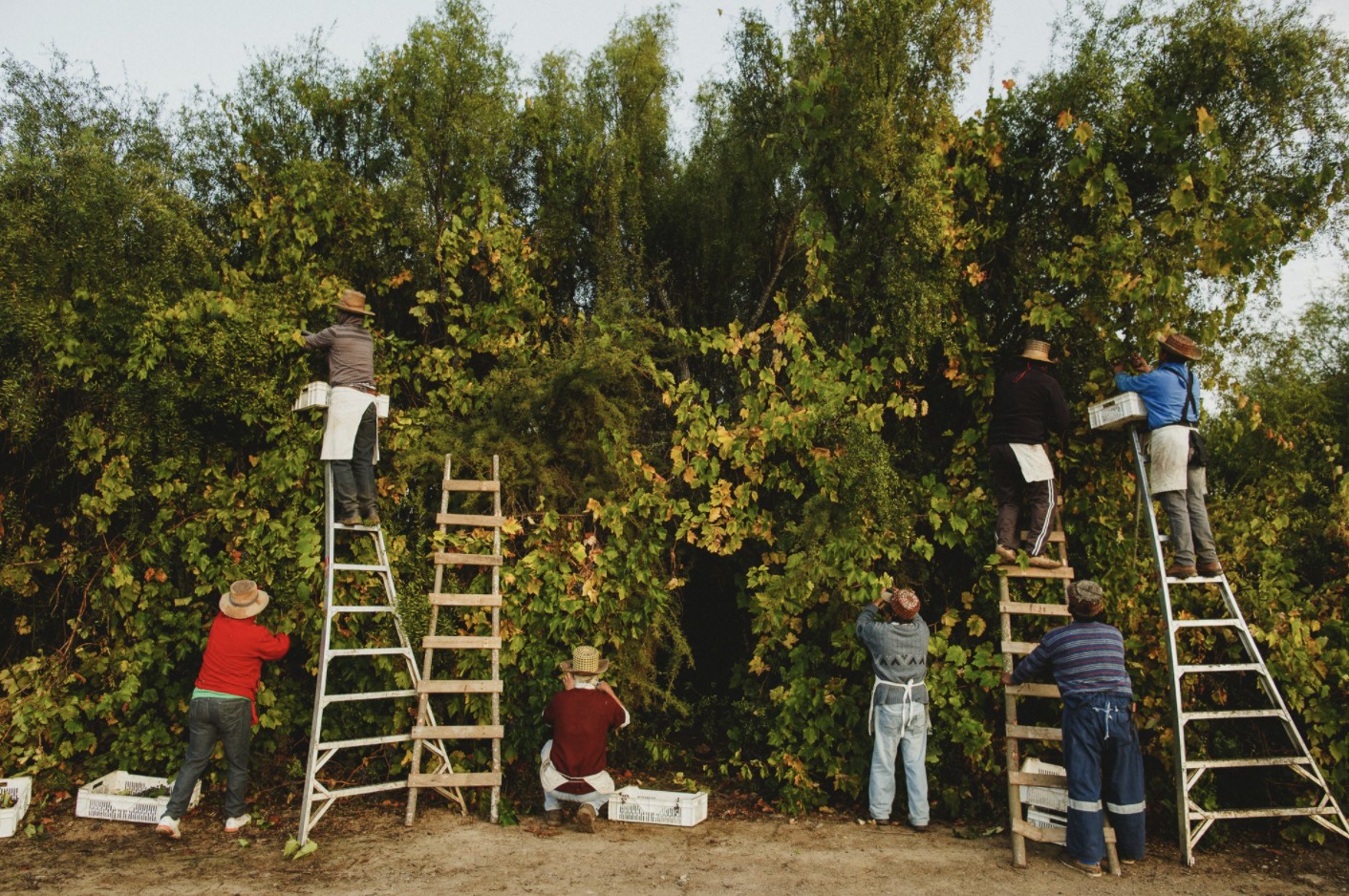What is País wine?
The rediscovery of País
Best País wine and producers
Quick guide to País in Chile
Pipeño, chicha and chacolí
Some of Chile’s old País vines beggar belief. Occasionally they are well over 200 years old, almost grotesque in their gnarled, twisting trunks — deformed, or continually reformed, over time. But for the winemaker and wine geek, there’s nothing more beautiful than these Freud-esque nudes of vines, displaying every crevice of age in their fissured trunks.
What is País wine?
País, aka. Listán Prieto in Spain, was the first variety of vine to arrive in Chile, indeed in South America. Known for its high yields and resistance to heat, disease and drought, it was a natural champion for those who pioneered the New World’s wine industry and in the same way that it won fans in North America (where it was called the Mission grape), it also had converts in South America. In the mid-1800s, País is believed to have accounted for 90% of the vines in Chile and Argentina. It was South America’s most-planted variety for centuries, helping give birth to a diverse family of Criolla varieties.
This century, however, País has been losing ground at a rapid rate — down from over 30,000 hectares in 1985 to barely 10,000 today, as producers struggle to find a market for the grapes and wines. Although the vineyard area is just a shadow of its former self, Chile still remains the world’s País heartland with the largest area of this ancient, hardy variety today.
País can be found all over Chile, from the Atacama Desert in the north down to wild vines in Patagonian forests in the south. However, most of the plantings are in the southern regions of Maule, Bio Bio and Itata, tended by the hands of over 6,000 growers. In its youth, País can be a rather rustic grape variety, making wines that are simple with slightly astringent tannins. However, with the benefit of vine age — there are many vines over 100 years old — and made skilfully, País can be nuanced and layered, with fruit, floral and earth aromas, and have a juicy palate with a spine of delicate tannins.
The reason these vines have survived so well over the centuries is because they are incredibly well-adapted to Chile’s environment. So well-adapted, in fact, that some wineries — such as Santa Rita in Maipo — are using País as a rootstock for new vines.
País vines have always been the mainstay of home producers for their pipeño, chicha and chacolí wines. However, when the Bordeaux influence was at its peak in the 20th century, these village wines were shunned in favour of sexier-sounding international varieties. By the turn of the 21st century, commercial wine producers were simply using País to bulk up jug wines, while many vines were being torn out at a swift pace, with few producers giving them a second thought.
The rediscovery of País wines and artisanal winemaking styles
It actually took an outsider’s perspective to notice that Chile had an overlooked treasure in these vines. It was two French men who took up the cause of pipeño wines and País in general and thrust them back into the limelight. Burgundy-bred Louis-Antoine Luyt started working with under-appreciated centenarian País vines in 2007. Mentored by the great Marcel Lapierre from Morgon in Beaujolais, Luyt made it his mission to reinstate not only the vines but also the traditional use of a zaranda (a bamboo destemmer), foot-stomping and fermentation in raulí pipas (native beech casks). His wines were a hit in Europe’s natural wine scene, opening up the export market and setting a benchmark for this little-known (but widely grown) variety.
An element of carbonic maceration is common in Luyt’s wines, and another French expat, David Marcel, also opted for a light and juicy style for his Aupa Pipeño in 2012. Sold in beer bottles, the idea behind Aupa was that this was a wine to be drunk young and chilled – celebrating pipeño as Chile’s equivalent of Beaujolais Nouveau. The radical rediscovery of pipeño ignited a spark in the industry and now several winemakers are driving a grassroots movement to reclaim the heritage País vineyards scattered across smallholdings in the south.
José Luis Gómez Bastías, Juan José Ledesma, Leo Erazo, Manuel Moraga Gutiérrez, Mauricio González, Renán Cancino and Roberto Henríquez are at the forefront of producing handcrafted wines from País and other Criolla varieties.
There are also several major players who have joined the league to protect País and bring it back into fashion. In 2006, Spanish wine mogul Miguel Torres was asked by Chile’s foreign affairs minister to look into making quality wine from the vast swathes of under-utilised País vines in Maule and Itata that were being ripped out in favour of forests for the cellulose industry. Torres’ proposition was to make a traditional method sparkling wine from País, somewhat akin to Cava, for which he had a deft winemaking team in place. Today Torres produces 30,000 cases of Fairtrade rosé sparkling País annually — the most-sold País in the world. But the Torres team also came up with a light and juicy carbonic maceration red (Reserva de Pueblo) and other more complex blends. And Torres’ search continues, as they venture further into Bio Bio, where they are now working with vines that are over 150 years old.
While Miguel Torres is certainly the biggest champion of País in size, Bouchon Family Wines has also had an important impact by sponsoring international País tête-à-têtes between producers in Chile, Argentina and the Canary Islands (País’ native home). Bouchon’s own collection of País wines frequently sells out within months of hitting the market, most especially its highly sought-after País Salvaje wine made from wild País vines that have scrambled up trees on their estate. The grapes are handpicked by men and women climbing up ladders into the trees, and the grapes are then destemmed with a zaranda and vinified in a natural and artisanal way.
The zaranda has been an epiphany for many commercial producers because it has shown how gentle pressure produces much softer, fresher wines without any of the tannic bitterness that industrial destemmers can extract from the skins and stems of Criolla varieties. Producers have also discovered that País responds well to vinification in the traditional historic tinajas (clay amphorae) and low or no added sulphur — the same techniques, in fact, that were used to make these wines hundreds of years ago. Even in the larger commercial wineries, an artisanal approach to winemaking is more typical with País wines today, and the variety is at the forefront of Chile’s natural wine movement.
The rediscovery of País has been significant in terms of restoring value to traditions, old vines and the thousands of families that depend on them. What is more, it also marks Chile’s shift from high-octane red wines with concentrated ripe fruit and significant oak ageing in favour of a more sensitive approach. País embodies Chile’s departure from championing strictly Bordeaux varieties to flying the flag for some of the more original and unusual varieties in its plethora of vineyards.
Although still niche today, the good news is that the País movement is growing and, as it’s an incredibly versatile variety, it’s taking form in different ways. País is capable of making floral and fruity white or rosé sparkling wines, and red wines that are juicy, light and fresh or earthy, more structured and hearty. But whatever shape or form it takes, I think that País is one of the most authentic wines of South America. A true heritage variety for the continent, and one that represents tradition and longevity, as well as innovation and pioneering New World spirit.
A LOS VIÑATEROS BRAVOS
MAITIA/AUPA
MAURICIO GONZÁLEZ
EL VIEJO ALMACÉN DE SAUZAL
Quick Guide to País wine & production in Chile
Hectares planted
- 10,236
Key descriptors of País
- Medium ruby colour. Aromas of red fruit, wildflowers & earth. Dry with soft acidity (medium -), spicy tannins (medium) and medium to light body.
Winemaking styles
- Historic and artisanal techniques are returning with gentle destemming by zaranda, gentle extraction and some level of carbonic maceration. Any oak ageing is typically in neutral, older oak barrels or large foudres and raulí casks, and vinification in tinajas is also common. Typically 12% – 13%.
If there’s one Chilean wine tradition that has never died, it’s pipeño. As you drive around the backroads of any of Chile’s traditional, historical wine regions, you’ll see large – often homemade – signs touting pipeño, chicha or chacolí. They all refer to rustic, artisanal wine made in the countryside and a traditional of home winemaking that has existed in Chile for close to 500 years.
What’s most exciting about these wines is how uniquely Chilean they are in their production — using not only grapes from old vines (some over 200 years old!) but the whole winemaking process includes many instruments you can only find in Chile. While chicha can refer to wine, it is a name that embraces fermented juice from any local fruit, whereas pipeño and chacolí are only ever made from wine grapes — as white and red wines, with a hundred shades of pink in between. In many places, pipeño, chacolí and chicha are all synonyms for the same type of wine, and while chacolí is more commonly used in Colchagua, pipeño is the most commonly used name of them all.
Typically pipeño is made from either just País grapes or more often a field blend of both white and red grapes from old vines (usually Criolla-dominant). The grapes are destemmed by hand using a homemade local bamboo (coligüe) destemmer, called a zaranda, which looks a bit like a bamboo mat and sits over the fermentation vat. The crushed grapes and juice fall into the vat underneath and are crushed by foot and left to ferment. The vats are usually open-topped and made of the native raulí beechwood, although modern pipeño producers might use plastic bins or whatever they have available. The wine is often aged in old pipas — large pipe-shaped vats made from native raulí wood too — for just a short time before it goes into the bottle, damajuana or a five-litre plastic bottle.
Although the grapes and method of production vary, pipeño, which takes its name from the pipas it is usually made in, is ultimately a table wine for the whole village, one that is made to be drunk within a few months of harvest, like a Beaujolais Nouveau in Burgundy, for example. Each wine reflects the family who makes it and their variation on the winemaking tradition, and it also expresses the old vines they have in their vineyard (which are inevitably a different combination to those in their neighbour’s vineyard) and the mesoclimate and soil in their region, as well as the weather that year.
These wines are rustic and simple but they tell a story about the families that make them and the villages they are from. Sometimes pipeño can be slightly sweet; sometimes it’s rather funky, but it’s always refreshing. And pipeño is a quintessentially Chilean wine; one that doesn’t exist elsewhere in the world and has been made by the same families for their own table-side pleasure generation after generation. Viva pipeño!
Want to know more about País and the wine regions of Chile?
ORDER YOUR COPY of The South America Wine Guide now!
E-book AVAILABLE ONLINEtoo
Main photo from South America Wine Guide book by Matt Wilson
Photos above: a traditional zaranda; Bouchon Family Wines’ País Salvaje
Want to learn more about País wine and vines?
Check out our video interview on old vine País with winemaker Christian Sepulveda
Read about the Almaule Pais wine association



